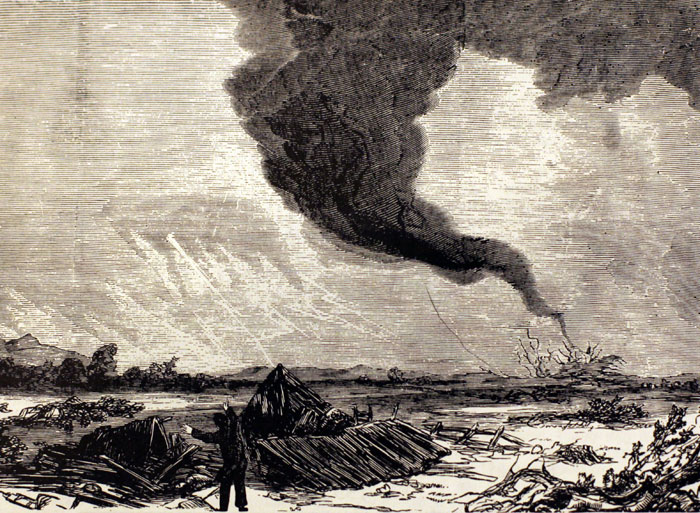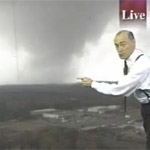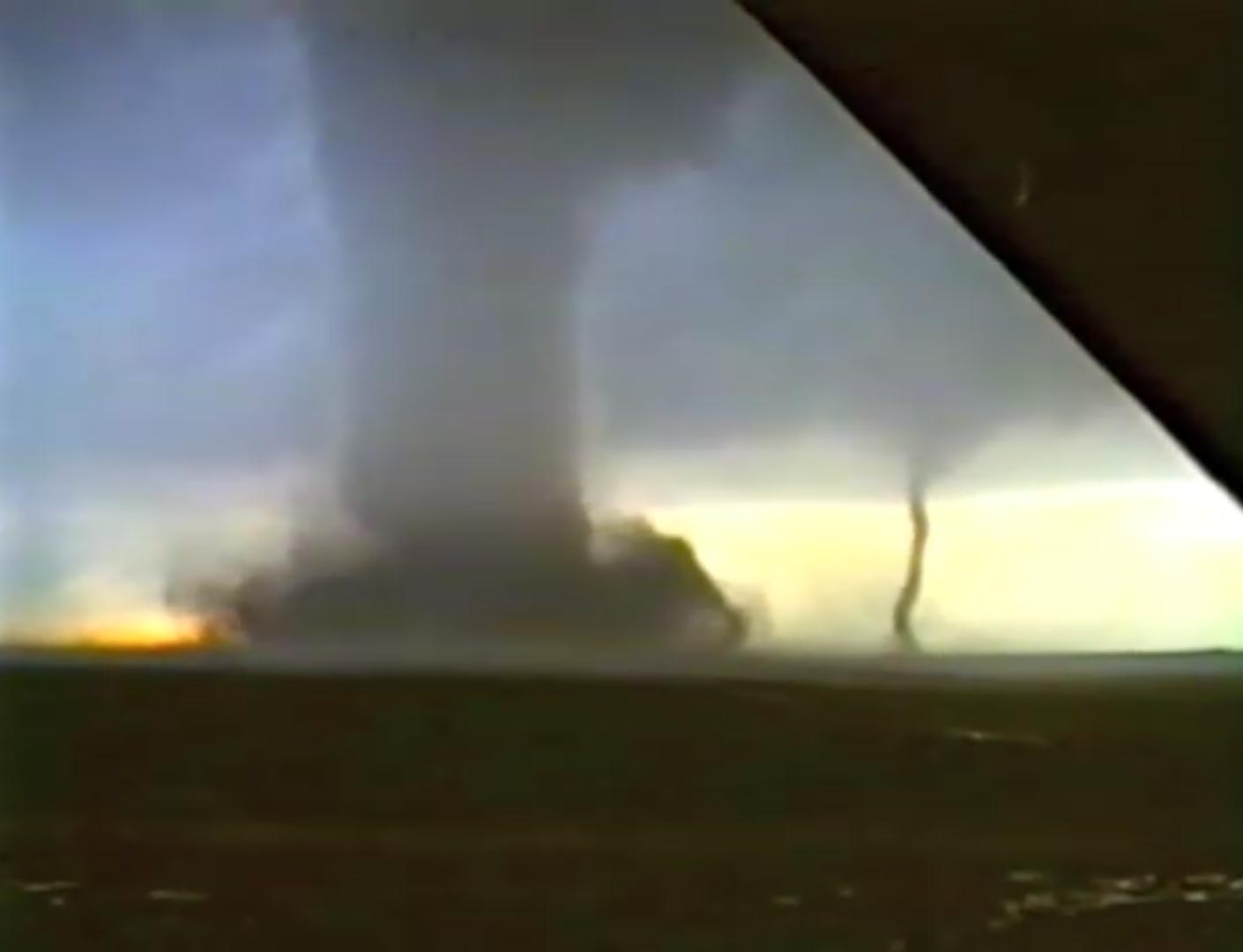
Accounts of tornadoes or tornado-like winds have been noted throughout English history back to around 1,000 AD. In the present-day United States, the first sightings of tornadoes or waterspouts by English speakers date back to the late 1500s, during expeditionary adventures that would ultimately lead to colonization of the coutnry.
As settlement advanced, tornadoes were reported from New England, through the Old South, and into the Old Northwest (present-day Midwest, Ohio Valley, Lakes region). With more people coming in contact with tornadoes more often, large organizations like the Smithsonian Institution got involved in the research.
At around the same time — during the mid-1800s — textbooks began to describe the phenomenon and what was believed to be behind it.
Let’s take a look at two such excerpts…
Elements of meteorology with questions for the examination, designed for schools and academics
4th ed. New York, 1851.
By John Brocklesby (1811-1899)
Professor of Mathematics and Natural Philosophy
Trinity College, Hartford, Connecticut
“Tornadoes may be regarded as hurricanes, differing chiefly in respect to their extent and continuance. They last only from fifteen to sixty to seventy seconds, their breadth varies from a few rods to several hundred yards, and it is probable that the length of their track rarely exceeds twenty-five miles.
Several theories have been advanced to explain the causes of whirlwinds, but they are supposed to be generally produced by the lateral action of opposing winds, or the influence of a brisk gales upon a portion of the atmosphere repose; in a manner analogous to the eddies that arise at the junction of the two streams, flowing with unequal velocities, or the air-whirls that occur, when the wind sweeps by the corner of a building, and strikes the calm behind it.
The existence of such opposing currents is fully proved by the observation of aeronauts, as well as by those of observers at the surface of the globe.
The whirl appears to originate in the higher regions of the atmosphere, and as it increases in violence, to descend; its base gradually approaching until it touches the earth.”
..
A treatise on meteorology with a collection of meteorological tables
New York, Harper & Brothers, 1868.
By Elias Loomis (1811-1889)
Professor of Natural Philosophy and Astronomy
Yale College, New Haven, Connecticut
“The motion of the air in tornadoes is spirally inward and upward, so that from each side of the track objects are drawn inward from the centre of the track, and very heavy objects are carried up in the centre. Light objects are elevated high into the air, and are sometimes carried many miles before they are thrown out of the vortex.
Tornadoes are uniformily preceded by unusual heat; they are invariably accompanied by lightning and rain, and frequently by hail.
When a tornado passes over a hilly country, it sometimes rages with destructive violence on the hill-tops, while objects in the intermediate valleys are entirely uninjured, showing that a violent whirl-wind may prevail at moderate elevation, but without reaching the earth’s surface.
When a violent tornado passes over a building where the doors and windows are closed, the walls are sometimes thrown outward with great force, the house presenting the appearance of an explosion, indicating that the pressure of the air on the outside of the building was suddenly diminished, and the house was burst open by the expansion of the air within.”
..
These textbook entries were reproduced in entirety, as found in Early American Tornadoes 1586-1870 (David Ludlum), pp. 157-158. The top image is a drawing of an undated tornado (likely from the early 1800s or prior), as seen in Significant Tornadoes: 1680-1991 (Thomas Grazulis), p. 550.
Latest posts by Ian Livingston (see all)
- Top tornado videos of 2023 - January 1, 2024
- March 31, 2023 tornado outbreak videos - March 31, 2023
- Top tornado videos of 2022 - December 31, 2022

